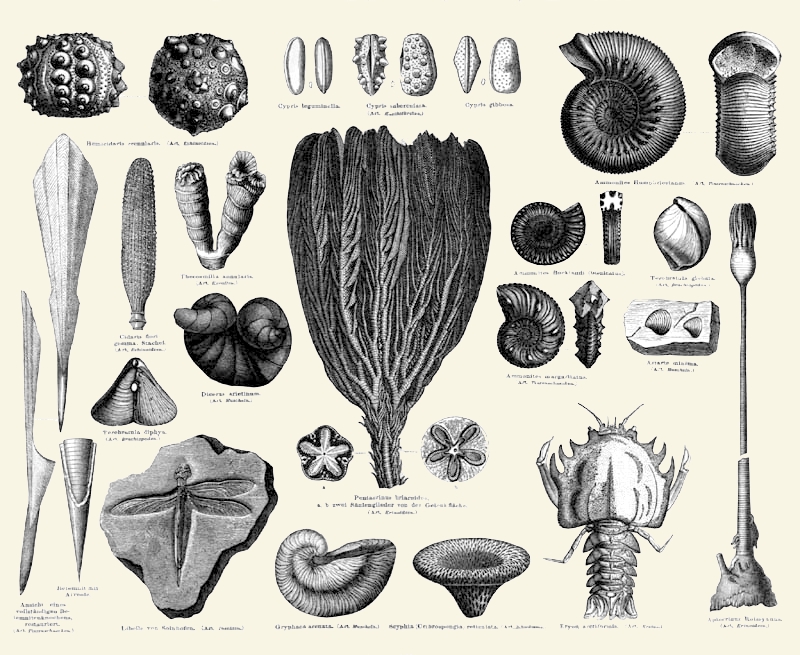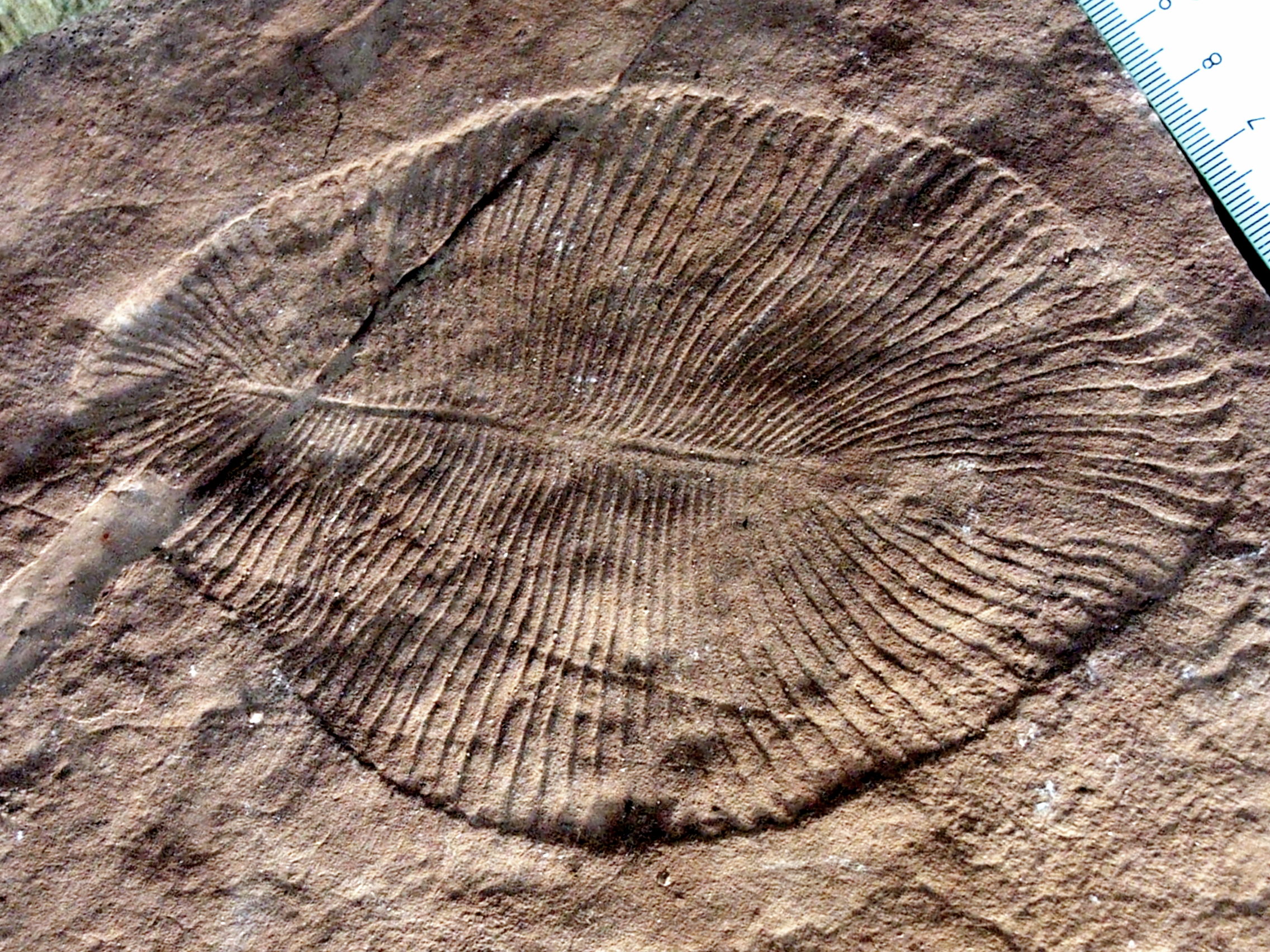 |
| Jurassic invertebrate fossils! |
Invertebrate animals have no vertebral column, no bones, and come in countless shapes and sizes. They represent the most diverse groups of animals on the planet! It would be impossible for me to give a complete representation of all invertebrates in a blog post, so I am just going to highlight some of the major groups and their evolutionary history.
The first evidence of multicellular animal life comes from fossils in the Ediacaran Period, about 600 - 545 million years ago. Most of these fossils are from soft bodied creatures, somewhat like jellyfish. These fossils represent soft bodied creatures that are very different from those seen today so classification of these animals is often very difficult.
 |
| Dickinsonia is a classic example of Ediacaran life |
Although most of the fossils from the Cambrian Explosion are very bizzare, most of them are clearly related to modern animal forms. There are representatives from most major groups of animals, even vertebrates! Pikaia is thought to be an ancestral form of vertebrate animals. The most famous fossil site for animals from this event is the Burgess Shale in Yoho National Park, British Columbia.
| Animals from the Burgess Shale (Top row: Anomalocaris, Opabinia; Bottom row: Hallucigenia, Wiwaxia, Pikaia), Image by: Matt Martyniuk |
In the animal kingdom, there are many different categories of animals. Vertebrate animals represent only one of these major categories! The simplest form of animals are the sponges. Even though they lack true tissue, they are considered animals because they have to eat food (they cannot make their own food like plants), and because they have sperm cells for reproduction. Unlike other animals that have a digestive system, sponges feed by filtering water through the many pores in their bodies (hence their scientific name is Porifera).
 |
| Sponges are animals! |
 |
| Anenomes are cnidarians |
| Worms, such as this tapeworm, can live almost everywhere, including your digestive system! |
 |
| Ammonites were one of the top predators in Mesozoic oceans! Photo by: Mike Peel. |
| Trilobites first appear at the Cambrian Explosion, and are the only completely extinct group of arthropods. |
The next group of invertebrates is one that most people have never heard of, but which were very important in the fossil record. This group is called the lophophorates (pronounced "LOW-fo-FOUR-ate") and includes two major groups: brachiopods and bryozoans, both of which are still alive today. They are characterized by a special feeding structure called the lophophore. The lophophorates were incredibly diverse and abundant during the Paleozoic, but were largely replaced by molluscs during the Mesozoic. This is the group that I study!
 |
| Brachiopods look like clams on the outside, but their internal anatomy is very different! Image by: Didier Descouens |
 |
| Crinoids are a cool group of echinoderms that are common in the fossil record! |
 |
| Fossils are awesome! Image by: Ghedoghedo |
Pearse, V., Pearse, J., Buchsbaum, M., and Buschsbaum, R., 1987, Living Invertebrates, Blackwell Scientific Publications, Palo Alto, CA, 848 pp.
http://www.ucmp.berkeley.edu/index.php - This website is a great resource for all things palaeontology and evolutionary biology. Their invertebrates section is very good and includes some awesome diagrams and animations.
No comments:
Post a Comment